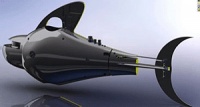BMT Group, a design, engineering and risk management consultancy, is leading the development of the robotic fish, which are being built by Prof Huosheng Hu and his robotics team at the School of Computer Science and Electronic Engineering at Essex University.

Luke Speller, senior research scientist at BMT Group, said: ’Currently, monitoring pollution in the sea is cumbersome. You have to send divers down to collect water samples, which we then test in a lab. This can take days and needs staff and expensive equipment. Our robotic fish will constantly test for pollution to give instant results without delay.’
Housed at the Science Museum’s new Antenna science news gallery, which opens on 26 June, the robotic fish – which cost approximately £20,000 to make – will soon be undergoing sea trials to test their ability in monitoring pollution.
The three-year research project, named SHOAL, is being funded by the European Commission and is being developed to provide a new solution to detecting pollution.
Hu said: ’The robotic fish have been designed to mimic the natural movements of real fish. By copying the way in which fish move, we have produced a highly efficient robot that can manoeuvre easily through the water. The tails mimic the fish’s oscillating [side-to-side] movement, which is more effective than using a propeller. We want these robots to be able to swim for as long as possible before their batteries need recharging, so efficiency is vital.’
The intelligent fish are able to react to their environment – they can sense and avoid obstacles and stay within reach of other robots. Each fish will have chemical sensors developed by the Tyndall National Institute, based in Ireland, to detect a range of pollutants.





April 1886: the Brunkebergs tunnel
First ever example of a ground source heat pump?